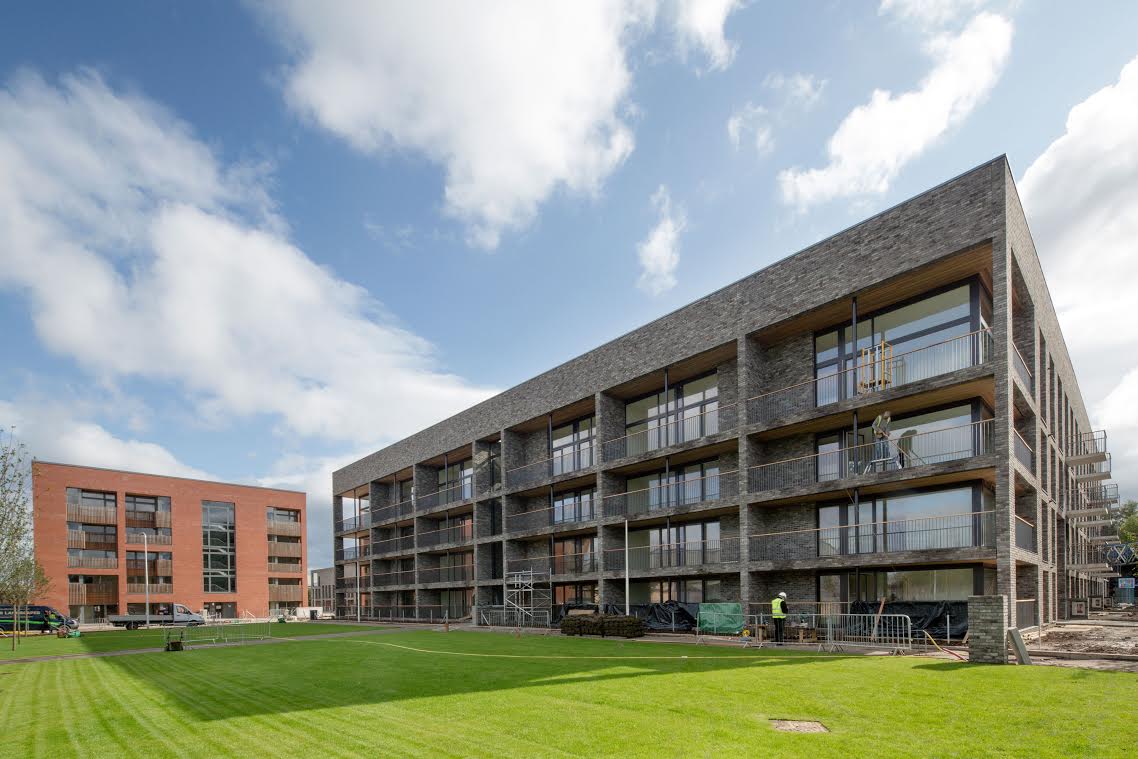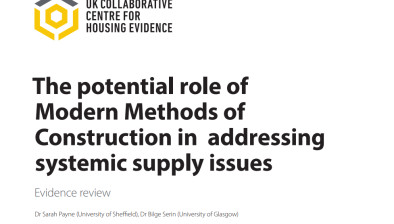Social housing investment ‘reduces poverty, improves health and drives economic growth’
Investment in the social housing sector generates economic and social benefits for Scotland and its people, including reducing poverty and homelessness, improving health, and creating jobs, a new report has found.

Written by UK Collaborative Centre of Housing Evidence (CaCHE) and HACT for the Scottish Federation of Housing Associations (SFHA), Joseph Rowntree Foundation (JRF), Public Health Scotland, and the Rural and Islands Housing Associations Forum (RIHAF), The Impact of Social Housing: Economic, Social, Health and Wellbeing brings together evidence that demonstrates the impact and value of social landlords’ housing and wider services.
The report also demonstrates how housing associations and co-operatives can measure the social and economic value of their work and evidence how it aligns with the Scottish Government’s National Performance Framework.
Building affordable housing was found to make a significant contribution to Scotland’s economy. A previous report commissioned by the SFHA, CIH Scotland and Shelter Scotland found that Scotland requires 53,000 affordable homes to be delivered between 2021 and 2026, in order to meet existing and newly arising need, and the new report estimates this will support inclusive growth and increase GVA by creating around 200,000 jobs, in the construction and related industries, and contributing more than £2 billion additional output per annum as well as additional Scottish tax revenues of £100 million.
The report showed that increasing affordable housing supply levels has many social benefits which can help to address inequality. Housing costs can be a financial burden for people on low and uncertain incomes, however, increasing the supply of affordable housing, with lower rents than in the private sector, was found to directly reduce child poverty in Scotland.
Increasing affordable housing supply in rural areas was found to help sustain fragile communities that are experiencing population loss. As well as offering housing at social rent levels, housing associations support rural communities by providing energy efficient housing that helps to tackle fuel poverty which is higher in rural areas. The employment and training opportunities provided by housing associations and co-operatives can also help to build more resilient rural communities.
The research also showed that good quality, warm energy efficient affordable housing may help to improve people’s physical and mental health and wellbeing.
Housing associations’ work helps to tackle homelessness in Scotland. The report’s findings showed that housing associations are increasingly letting a large share of their vacant homes to the statutorily homeless, often as part of nomination agreements with local authorities.
Sally Thomas, SFHA chief executive, said: “The impact of housing associations and co-operatives’ work goes far beyond ‘just’ delivering housing – they help to create sustainable and resilient communities. Through their building programmes, as well as their wide range of services, social landlords help the Scottish Government to meet its policy objectives in health and social care, poverty, homelessness, an ageing population, employment, fuel poverty, and inclusive growth.
“Due to the effects of COVID-19, now, more than ever, SFHA is calling on the Scottish Government to recognise the social and economic contribution of housing associations and co-operatives and make building affordable housing a key part of Scotland’s recovery.”
Kenneth Gibb from CaCHE said: “The now well-established evidence of diverse positive impacts means that we can confidently measure the beneficial effects of different kinds of housing associations and connect them to the goals of Scottish Government’s National Performance Framework. This should reassure stakeholders – communities, government and lenders alike – that such investment and activity offers significant economic and social returns.”
Andrew Van Doorn, HACT chief executive, said: “The work that social landlords do in communities matters. It matters in communities, but it matters to Scotland as well. This report demonstrates how the work that social housing organisations do with their residents and communities has significant social value impact at both a micro and macro level.
“As the four case studies in the report show, regardless of whether social landlords work in rural or urban settings, or in more than one community, they can identify and measure their impact in order to demonstrate their social value.”
Jim McCormick, associate director Scotland at the Joseph Rowntree Foundation, said: “Everyone should have a warm, decent home they can afford. At a time when public investment is under such pressure to deliver a just recovery, high-quality social housing can deliver an exceptional return.
“There is no route to achieving our ambitious child poverty reduction targets without more families living in high-quality, lower cost homes.”
Dr Matt Lowther, head of place and equity from Public Health Scotland, said: “We know that housing is a critical public health issue and that factors such as housing condition, energy efficiency, accessibility and affordability make a difference for physical and mental health outcomes.
“The COVID-19 pandemic has also brought the limitations of space standards and amenity levels into sharp focus, highlighting that the design and quality of our homes also needs to be a central part of any housing and placed-based strategy in the recovery programme.
“This research underlines the contribution that social housing has, and can, continue to have in reducing inequalities, and, as providers of social housing, local government and housing associations will make a significant contribution to our recovery from the current public health crisis.”
Bryan Leask from RIHAF added: “The supply of good quality, affordable housing is critical in our rural towns and villages fighting population loss, but that affordable supply is constrained by high infrastructure costs and the lack of affordable land. However, even a small number of affordable homes can make a huge difference to rural communities, and it is important that the social and economic benefit of the services and homes provided by housing associations and co-operatives is recognised and understood.
“As we move forward, it is vital that the unique challenges facing housing providers in rural areas are appreciated and future housing investment is split fairly and proportionately to ensure remote, rural and island areas get their fair share.”
















